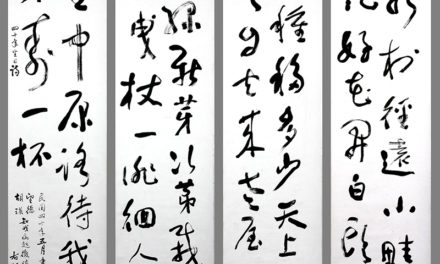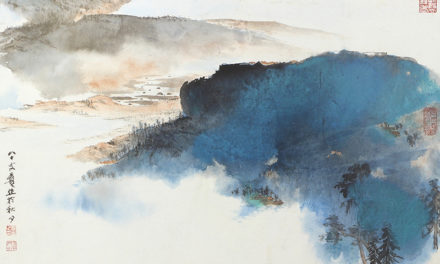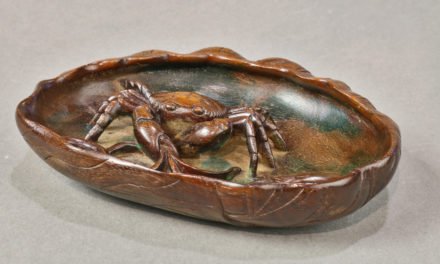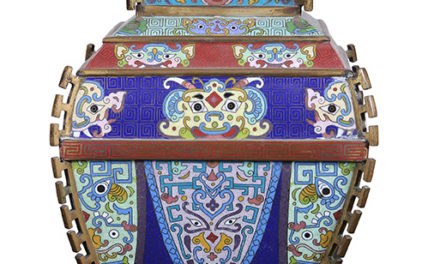
Himalayan painted thangka, Vairocana Mandala, ink and color on textile, the Five Great Buddhas to the center encircled by myriad of seated deities, the outer multi-layered bands filled with Buddhist teachers, with stupas in the four directions
When exploring Esoteric Buddhist art, one of the distinctive types we come across is the mandala. A mandala is essentially a microcosm of the Buddhist universe represented visually. It can take forms in mediums such as thangka paintings or the sand mandala, with the emphasis in the meditative process of ritually creating and disassembling.
This diagram which is highly symmetrical and radially oriented starts from a principal deity in the center encircled by eight deities, four in the cardinal directions and four in the corners, with the layout similar to the form of an asterisk. This central core is often encircled by additional deities set within eccentric square walls with T-shaped triumphal gates. Additionally, there can even be elaborate pavilions along with deities guarding these gates.
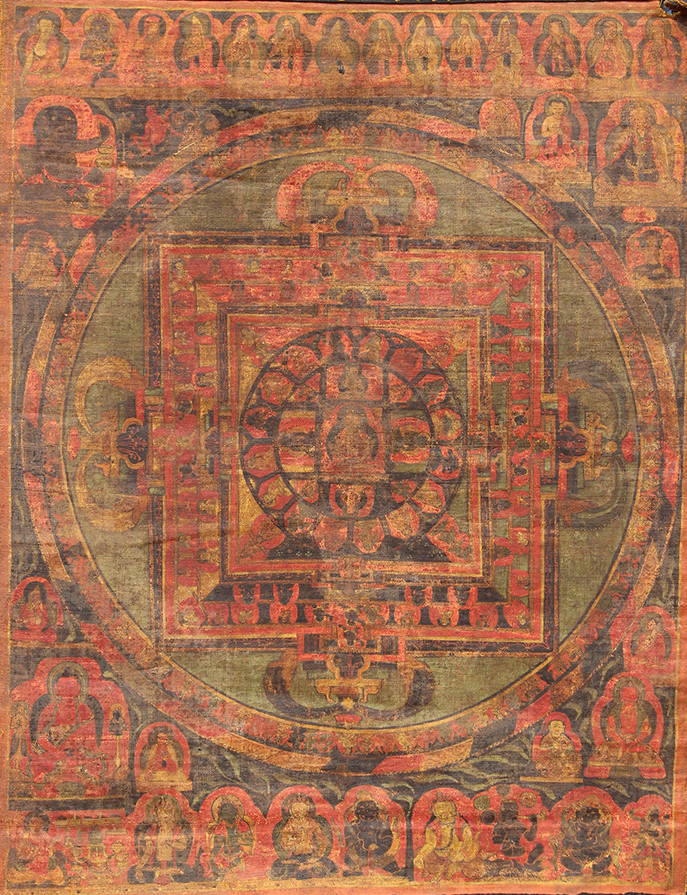
Himalayan painted thangka, Vairocana Mandala, ink and color on textile, the First Buddha seated to the center flanked by the other four dhyani-buddhas, all encircled by seated deities, with additional Buddhist teachers at the corners
An example is an upcoming piece in our June 17th sale, which features the Five Great Buddhas (Five Tathagatas), centered by Vairocana also known as the first Buddha, surrounded by Amoghasiddhi in the North, Akshobhya in the East, Ratnasambhava in the South and Amitabha in the West, along with their corresponding attending bodhisattvas in the corners (lot 8585, estimate: 2000-4000). These are further encircled by a band with 16 deities, all within the first set of walls, then surrounded by two rows of additional deities enclosed by the second set of walls, also with deities guarding gates leading to elaborate thrones; all set within a mandala which literally means circle. The composition, lastly, is framed by major Buddhas, and an array of bodhisattvas, some in wrathful forms, along with lineage teachers.
Building from this foundation, one can begin to explore the construction of these various Buddhist realms.
